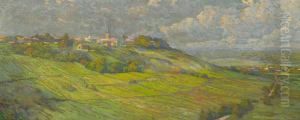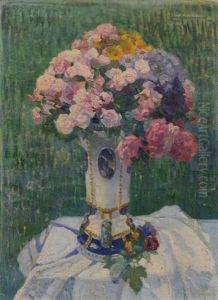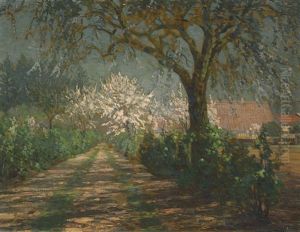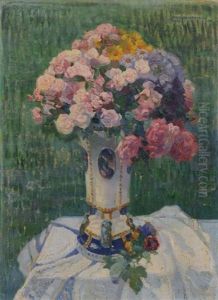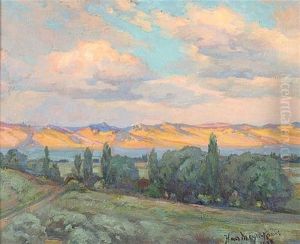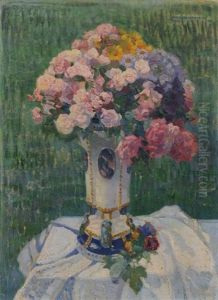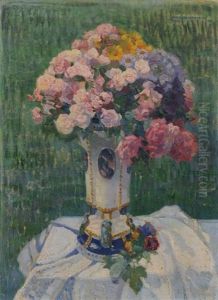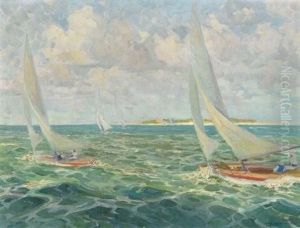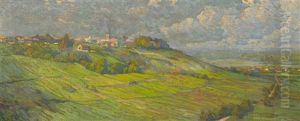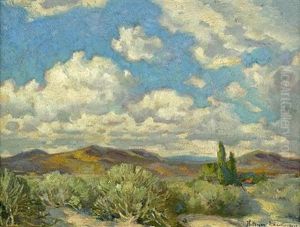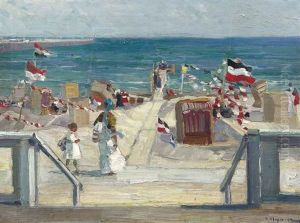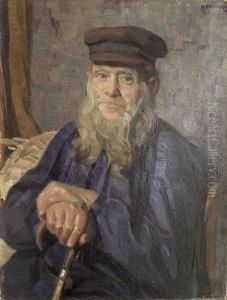Hans Meyer-Kassel Paintings
Hans Meyer-Kassel was a German-born American painter known for his landscape paintings and portraits. Born on March 28, 1872, in Kassel, Germany, Meyer-Kassel began his formal training in the arts at an early age. He studied at various art schools in Germany, including the Academy of Fine Arts in Berlin and the Academy of Fine Arts in Munich, where he honed his skills in the traditional academic style of painting.
His early career in Germany was marked by success; he exhibited his work frequently and received commissions for portraits from notable figures of the time. However, with the rise of political instability and the advent of World War I, Meyer-Kassel's life and career faced disruptions. In the aftermath of the war, economic conditions in Germany became tough, and this affected the art market.
Seeking new opportunities, Meyer-Kassel immigrated to the United States in the 1920s, initially settling in New York before eventually moving westward. He spent some time in San Francisco and then moved to Nevada, where he found inspiration in the landscape and light of the American West. His paintings from this period show a transition from the formal, academic style of his training to a looser, more impressionistic approach. Meyer-Kassel was drawn to the Sierra Nevada mountains and the deserts of Nevada, and these settings became frequent subjects in his artwork.
During his time in America, Meyer-Kassel became known for capturing the spirit of the West in his art. He painted portraits of local figures, landscapes of the Nevada desert, and scenes of the Sierra Nevadas. His work during this period contributed to the cultural heritage of the region and is considered an important part of the artistic history of Nevada.
Hans Meyer-Kassel continued to paint and exhibit his work up until his death on August 19, 1952. His legacy lives on through his paintings, many of which are housed in museums and private collections. Meyer-Kassel is remembered not only for his contribution to the arts but also for his role in bringing European artistic traditions to the American West and integrating them with the unique qualities of the landscape and culture he found there.
